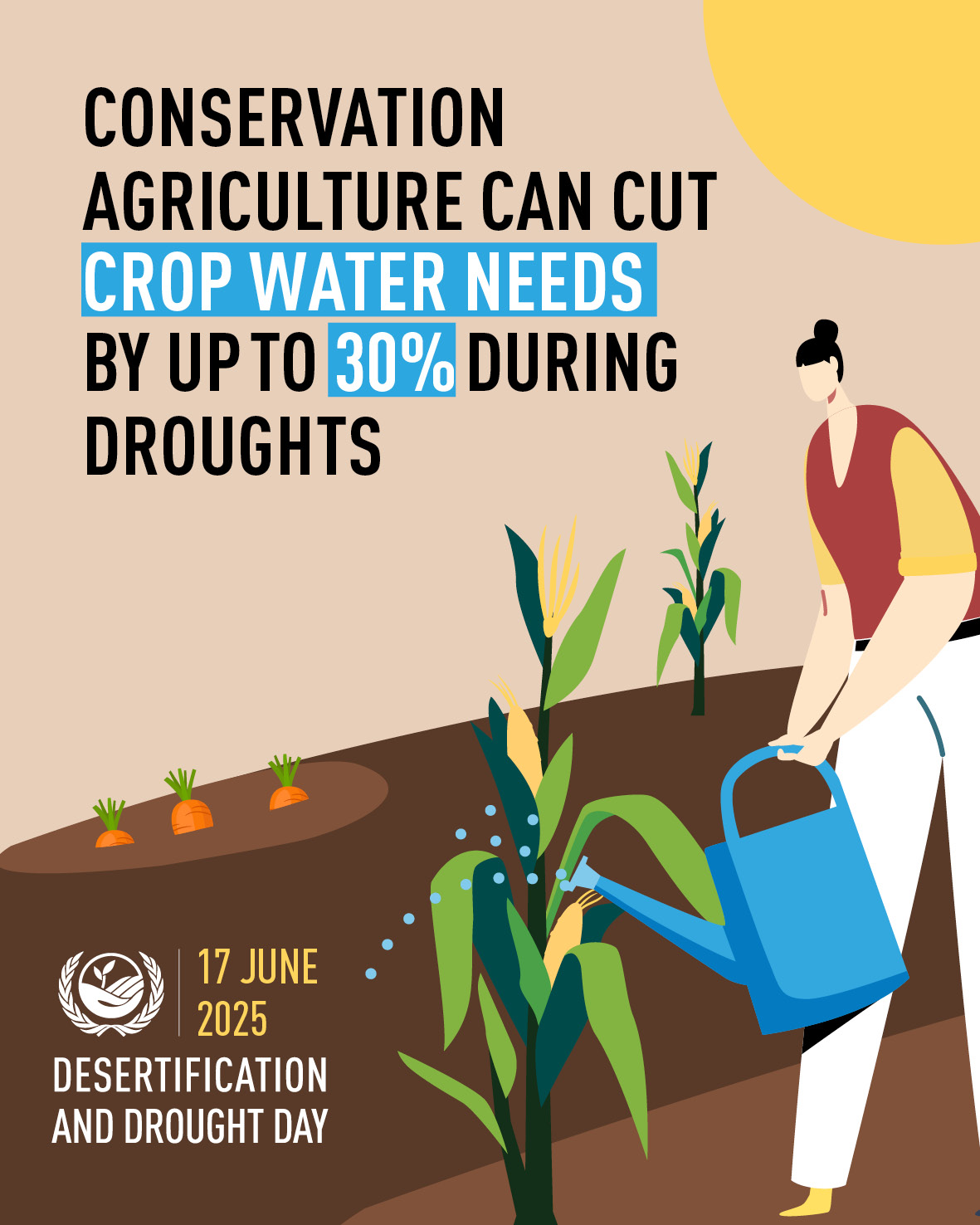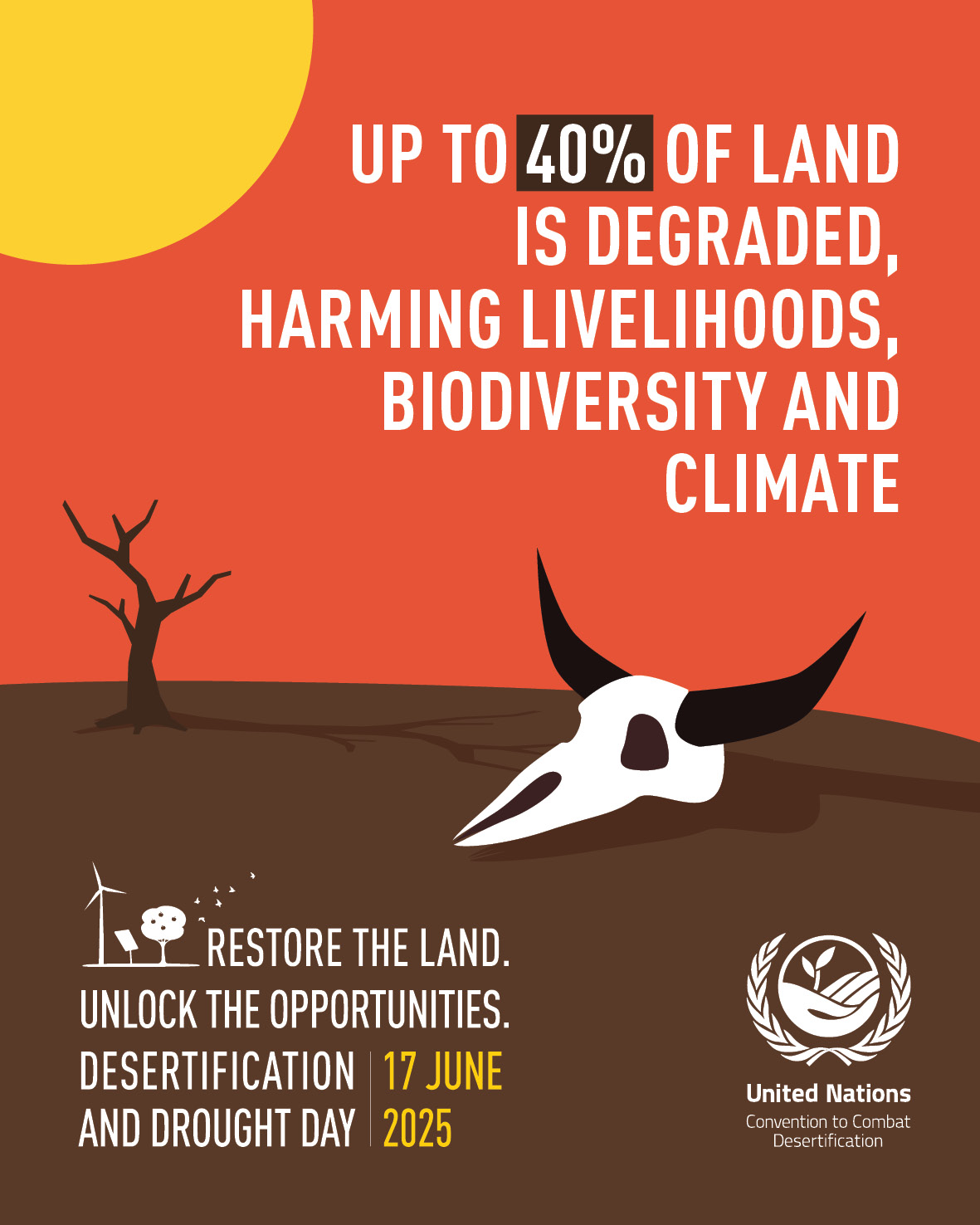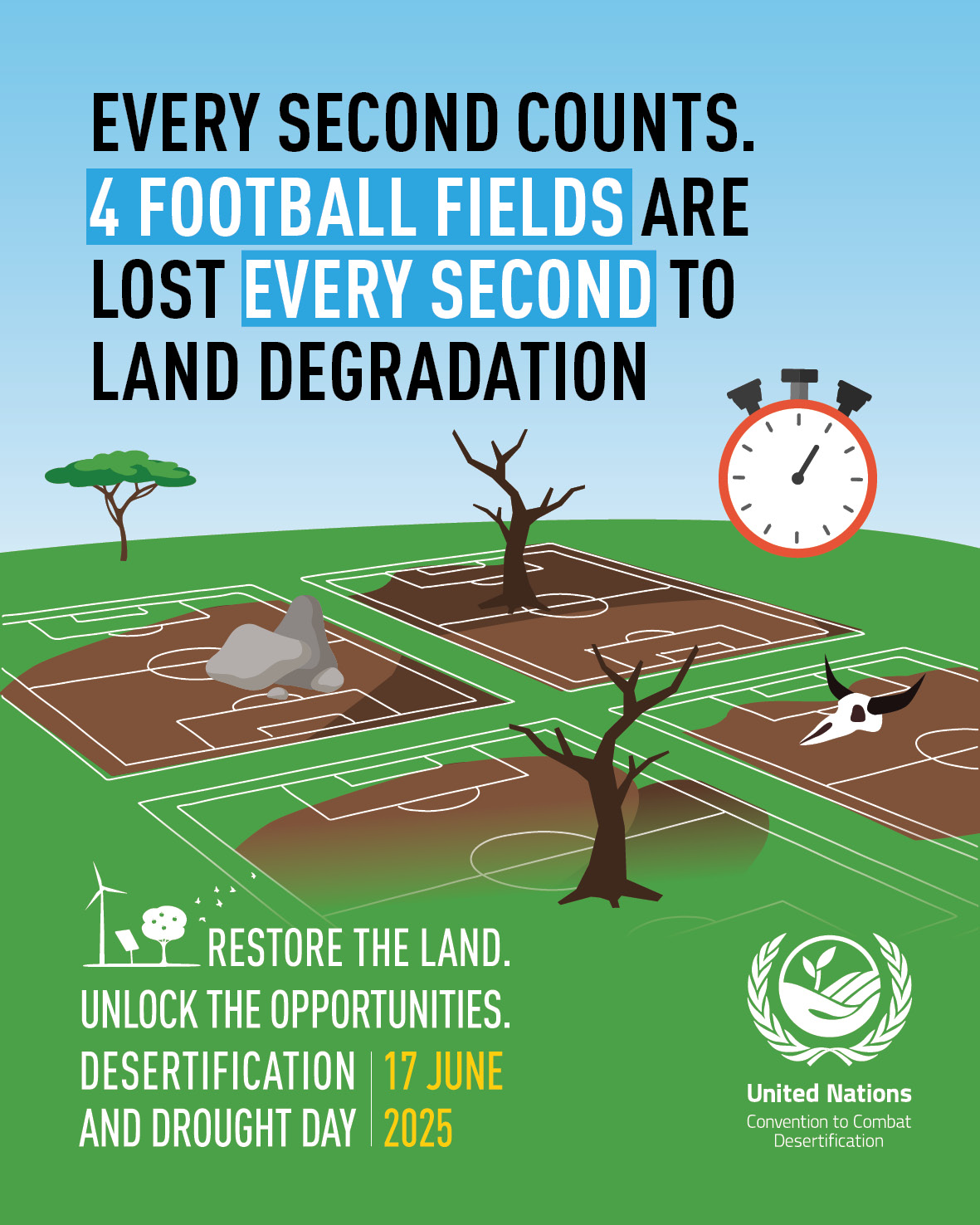The commemoration in 2025 of the World Day to Combat Desertification and Drought Day focuses on one of the most urgent global challenges: restoring 1.5 billion hectares of degraded land and jumpstarting a trillion-dollar land restoration economy by 2030.
The 2025 global observance event will be hosted by the government of Colombia.
Under the theme “Restore the land. Unlock the opportunities”, the 2025 observance shines a light on how restoring nature’s foundation—land—can create jobs, boost food and water security, support climate action and build economic resilience.
As we reach the midpoint of the UN Decade on Ecosystem Restoration (2021–2030), action is more urgent than ever. To meet global goals, 1.5 billion hectares must be restored by 2030. So far, 1 billion hectares have been pledged through initiatives like the G20 Global Land Restoration Initiative and the Great Green Wall Initiative.
Now is the time to turn ambition into action.
Germ of Life provides solutions for drought prevention and mitigation
At Germ of Life, supported by Interreg Euro-MED, we are working to provide solutions to the multiple problems caused by droughts.
Germ of Life is developing an innovative system of digital technologies to improve preventive management of drought risks.
We bring together institutions, entities and companies to work with a cross-border dimension
Because a shared approach is needed to collaborate in assessing the vulnerability of territories, ecosystems and populations.
We combine nature-based solutions and technological solutions
Because it is the best way to generate innovation through pilot tests in areas of several countries.
We facilitate prevention by adopting artificial intelligence and data-driven early warning systems through remote sensing
Because we are going to promote the reuse of our solutions and their transferring to other territories.

Why land restoration matters
Yet each year, an area the size of Egypt is degraded, driving biodiversity loss, increasing drought risk and displacing communities. The ripple effects are global—from rising food prices to instability and migration.
But restoring land flips the script. Every dollar invested in restoration generates USD7 to USD30 in returns. Reviving land restores productivity, strengthens water cycles and supports millions of rural livelihoods.
The financial case is clear, but action must follow. According to UNCCD Global Mechanism, the world needs to invest USD1 billion every day between 2025 and 2030 to stop and reverse land degradation. Current investments fall short at USD66 billion annually, with only 6 per cent coming from the private sector.
We need to scale up ambition and investment by both governments and businesses. This means unlocking new finance, creating decent jobs, embracing innovation and making the most of traditional knowledge.
The Benefits for Land Restoration
Biodiversity: Restoring 15% of converted or degraded lands in priority areas could avoid 60% of expected species extinctions.
Climate: Restoring 15% of degraded or converted lands in key priority areas could sequester up to 300 gigatons of carbon—equivalent to approximately 30% of the total atmospheric increase in carbon since the Industrial Revolution.
Food security: Improving land and water management on just 25% of sub-Saharan Africa’s 300 million hectares of prime cropland would result in an additional 22 million tons of food.
Water: Sustainable land management can increase water productivity by up to 100%. Healthy lands are better at filtrating and storing water, thereby improving water availability, reducing water stress andwater-related disasters like droughts and floods.
Health: The annual cost of future pandemics could be as much as US$ 2 trillion – for just 1% of that cost, the world could prevent pandemics at their source by protecting nature.
Energy: Renewable energy powers up sustainable farming, enabling irrigation, storage and processing to reduce waste and support land restoration in remote areas.
Technology: From data-driven adaptive land and water management to apps enabling consumers to track their “land footprint”, innovation and tech can unlock new pathways to scale up land restoration. agriculture and forestry sectors.
Tourism: Costa Rica’s investment in national parks and protected areas, through land restoration efforts, has contributed vastly to eco-tourism accounting for 5,8% of its GDP.
Jobs: In Africa, land restoration could create up to 10 million jobs in sustainable agriculture and forestry sectors.

Message for World Day to Combat Desertification and Drought
Antonio Guterres, UN Secretary-General
What’s good for land is good for people and economies.
But humanity is degrading land at an alarming rate, costing the global economy nearly $880 billion every year — far more than the investments needed to tackle the problem.
Droughts are forcing people from their homes, and inflaming food insecurity – the number of newly displaced people is at its highest level in years.
Repairing the damage we have done to our land offers huge benefits, including a great return on investment. It can reduce poverty, create jobs, safeguard water supplies, protect food production, and improve land rights and incomes – especially for smallholder farmers and women.
The theme of this year’s Desertification and Drought Day – “Restore the Land. Unlock the Opportunities” – is both a statement of fact and a call to action.
I urge governments, businesses, and communities to answer the call and accelerate action on our shared global commitments on sustainable land use. We must reverse degradation, and boost finance for restoration – including by unlocking private investment.
Let’s act now to heal land, seize opportunities, and improve lives.


